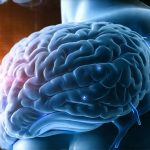The sensation of nausea – queasiness, feeling sick to your stomach, an impending urge to vomit – is one most people experience at some point in their lives. Often it’s fleeting, tied to a specific event like motion sickness, food poisoning, or intense stress. However, for many, these episodes aren’t isolated incidents but recurring disruptions that seem strangely disconnected from obvious triggers. They might be accompanied by other seemingly unrelated symptoms – fatigue, dizziness, changes in heart rate, even cognitive fuzziness – hinting at something deeper than a simple stomach upset. This can lead to significant anxiety and disruption of daily life, leaving individuals searching for explanations beyond the typical causes.
The often-overlooked connection lies within our internal rhythms, the intricate biological processes that govern everything from sleep-wake cycles to hormone production and digestion. These rhythms aren’t just about timekeeping; they’re fundamental to how our bodies function optimally. When these rhythms are disrupted, whether by external factors or internal imbalances, it can manifest in a wide range of symptoms, including – and frequently as one of the first signs – unexplained queasy episodes. The challenge is that these disruptions aren’t always easily identifiable, and their connection to nausea isn’t immediately obvious, leading many people to feel dismissed or misdiagnosed. This article explores this complex interplay between internal rhythm disturbances and recurring feelings of sickness, aiming to provide a better understanding for those who experience it.
The Body Clock & Its Disruptions
Our bodies operate on numerous interconnected rhythms, but the most well-known is the circadian rhythm. This roughly 24-hour cycle influences sleep, hormone release (like cortisol and melatonin), body temperature, and even appetite. It’s deeply intertwined with our environment, particularly light exposure, which acts as a primary cue for regulating it. But beyond the circadian rhythm, there are other internal rhythms at play – ultradian rhythms (cycles shorter than 24 hours) governing things like heart rate variability and digestive processes, and infradian rhythms (longer than 24 hours), influencing menstrual cycles or seasonal affective disorder. Disruptions to any of these rhythms can cascade into a variety of physical and psychological symptoms.
These disruptions aren’t always dramatic shifts; they can be subtle and insidious. Common causes include: irregular sleep schedules (shift work, jet lag), chronic stress, poor diet, lack of physical activity, exposure to artificial light at night, and even underlying medical conditions. A particularly damaging cycle can develop where disrupted rhythms lead to anxiety about experiencing symptoms, which then further disrupts the rhythms – a vicious feedback loop. When these internal timing mechanisms are off-kilter, the body struggles to anticipate needs and respond appropriately, leading to physiological imbalances that can trigger nausea and other digestive issues. The gut is particularly sensitive to circadian disruption because it has its own intrinsic rhythm, relying on consistent timing for optimal function. If you find yourself experiencing this, consider if bathroom rhythm disruption might be a factor.
The consequences of chronic rhythm disruption extend far beyond just feeling sick. Research suggests links to increased risk of metabolic disorders, cardiovascular disease, weakened immune function, and mental health problems. Understanding this connection is crucial because it shifts the focus from treating only the symptoms (the nausea) to addressing the root cause – restoring balance to the body’s internal timing mechanisms. This often requires a holistic approach incorporating lifestyle adjustments, stress management techniques, and potentially professional guidance to identify and address underlying imbalances. It’s also worth exploring if gerd and goosebumps are playing a role in your discomfort.
Identifying Potential Rhythm Disruptors
Pinpointing the source of an internal rhythm disruption can be challenging, as it often involves detective work. Here are some areas to consider:
- Sleep Patterns: Are you consistently getting enough sleep? Do you have a regular bedtime and wake-up time, even on weekends? Irregular sleep is one of the most common disruptors. Track your sleep for a week or two – note bedtimes, wake times, sleep quality, and any awakenings during the night.
- Diet & Hydration: Are you eating at consistent times each day? Do you consume processed foods, excessive sugar, or caffeine, which can impact gut health and rhythm regulation? Staying adequately hydrated is also crucial for digestive function. Consider a food diary to identify potential triggers.
- Stress Levels: Chronic stress significantly impacts all internal rhythms. Explore stress management techniques like meditation, yoga, deep breathing exercises, or spending time in nature. Journaling can also help you identify sources of stress and develop coping mechanisms.
- Light Exposure: Are you getting enough natural light during the day? Conversely, are you exposed to excessive blue light from screens at night? Optimize your environment by maximizing daytime light exposure and minimizing screen time before bed. Consider blue light filters for devices.
The Gut-Brain Connection & Nausea
The gut and brain are intimately connected via what is known as the gut-brain axis. This bidirectional communication pathway allows constant exchange of signals, influencing both digestive function and mental well-being. A healthy gut microbiome – the community of trillions of bacteria living in our intestines – plays a vital role in this connection. Disruptions to the microbiome (caused by factors like antibiotics, poor diet, or stress) can lead to inflammation and altered gut motility, increasing susceptibility to nausea.
Nausea itself isn’t always a sign of illness; it’s often a protective mechanism designed to prevent us from ingesting harmful substances. However, when it becomes chronic and unexplained, it suggests the system is misfiring. Internal rhythm disruptions can directly affect gut motility – the movement of food through the digestive tract – leading to delayed gastric emptying or increased sensitivity to normal gut sensations. This can trigger feelings of fullness, bloating, and ultimately nausea, even in the absence of any actual illness. Addressing both the internal rhythms and the health of the gut microbiome is often essential for long-term relief. Often soft stool episodes can be a symptom linked to this disruption.
Restoring Rhythm & Finding Relief
Restoring balance to disrupted internal rhythms isn’t a quick fix; it requires consistent effort and lifestyle adjustments. Here are some strategies:
- Chronotherapy: This involves gradually shifting your sleep schedule or other habits to align with your natural circadian rhythm. For example, if you struggle with insomnia, slowly adjust your bedtime earlier by 15-30 minutes each night.
- Time Restricted Eating: Consuming all your meals within a specific window of time (e.g., 8-12 hours) can help synchronize the body’s internal clock and improve digestive function. Avoid late-night snacking.
- Regular Exercise: Physical activity, particularly outdoors, helps regulate circadian rhythms and reduce stress. Aim for at least 30 minutes of moderate-intensity exercise most days of the week.
- Mindfulness & Relaxation Techniques: Practices like meditation, yoga, and deep breathing exercises can help calm the nervous system and reduce stress, which is a major disruptor of internal rhythms.
- Professional Support: If symptoms are severe or persistent, consider consulting with a healthcare professional specializing in functional medicine, gastroenterology, or sleep medicine. They can help identify underlying imbalances and develop a personalized treatment plan.
It’s important to remember that everyone’s body is different. What works for one person may not work for another. The key is to listen to your body, experiment with different strategies, and be patient with the process. Often, simply acknowledging the connection between internal rhythm disruptions and queasy episodes can empower individuals to take proactive steps towards restoring balance and finding lasting relief. It’s also important to consider if stool delay from anxiety could be a contributing factor. Additionally, pay attention to your body’s response to food; cramping and flatulence can sometimes signal underlying digestive sensitivities that exacerbate rhythm disruptions. Finally, think about how weekend recovery eating may be influencing your routine.


















